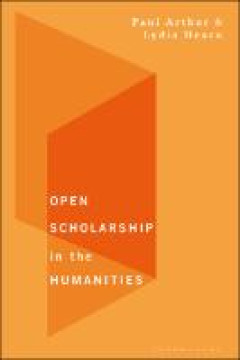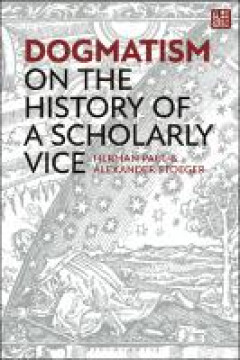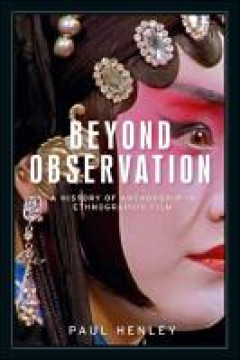Ditapis dengan
E-book Ocean: A Visual Encyclopedia
- Edisi
- -
- ISBN/ISSN
- 9781465435941
- Deskripsi Fisik
- 58 halaman, ilus.
- Judul Seri
- -
- No. Panggil
- 551.46 WOO o
- Edisi
- -
- ISBN/ISSN
- 9781465435941
- Deskripsi Fisik
- 58 halaman, ilus.
- Judul Seri
- -
- No. Panggil
- 551.46 WOO o
E-book Jail Design Guide
The opening statement of the preface to this guide identifies its purpose as one of helping to create “better” and “more effective” jails. Because such terms can mean different things to different people, they should be defined. The findings of the original small jails research indicated that better, more effective jails are fundamentally those that satisfy the basic needs of their occu…
- Edisi
- -
- ISBN/ISSN
- -
- Deskripsi Fisik
- 334 hlm
- Judul Seri
- -
- No. Panggil
- 725.6 KIM j
E-book A Time Travel Dialogue
- Edisi
- -
- ISBN/ISSN
- 9781783740383
- Deskripsi Fisik
- 93 halaman
- Judul Seri
- -
- No. Panggil
- 501 CAR a
- Edisi
- -
- ISBN/ISSN
- 9781783740383
- Deskripsi Fisik
- 93 halaman
- Judul Seri
- -
- No. Panggil
- 501 CAR a
E-book Lessons in Perception : The Avant-Garde Filmmaker as Practical Psychol…
Existing fi lm scholarship that draws from the fi eld of cognitive science has char-acterized commercial fi lmmakers as practical psychologists, who are experts at shaping our senses and ‘preying (usually in a good sense) on our habits of mind in order to produce experiences’ (Bordwell 2011). A skilled fi lmmaker will elicit emotional responses, draw the viewer’s attention to the appropri…
- Edisi
- -
- ISBN/ISSN
- 9781785336423
- Deskripsi Fisik
- 228 hlm
- Judul Seri
- -
- No. Panggil
- 791.4375 TAB l
E-book Masterpieces of the J. Paul Getty Museum : European Sculpture
I forget who first jokingly defined sculpture as something you bump into when you step back to look at a painting. I n any case, like most witticisms, this one contains a germ o f truth: both the general public and scholars pay more attention to painting than to sculpture. There are undoubtedly many reasons for this. We are a society geared to experiencing things on a flat plane rather than in …
- Edisi
- -
- ISBN/ISSN
- 0892365137
- Deskripsi Fisik
- 130 hlm
- Judul Seri
- -
- No. Panggil
- 735.21 ANG m
E-book Adult Development and Aging
This book rebuts these erroneous ideas, but it does not replace them with idealized views of adulthood and old age. Rather, it paints an accurate picture of what it means to grow old today, recognizing that development across adulthood brings growth and opportunities as well as loss and decline. To begin, we consider the life-span perspective, which helps place adult development and aging into…
- Edisi
- 6th ed.
- ISBN/ISSN
- 9780495601746
- Deskripsi Fisik
- 642 hlm
- Judul Seri
- -
- No. Panggil
- 612.67 CAV a

E-Book Open Scholarship in the Humanities
Exploring the rise of open scholarship in the digital era and its transformational impact on how knowledge is created, shared, and accessed, this open access book offers new insights on the history, development, and future directions of openness in the humanities and identifies key drivers, opportunities, and challenges. The concept of open research is reconfiguring scholarly communication acro…
- Edisi
- -
- ISBN/ISSN
- 9781350232280
- Deskripsi Fisik
- 155 halaman
- Judul Seri
- -
- No. Panggil
- 371 ART o

E-Book Dogmatism: On the History of a Scholarly Vice
Why does the history of dogmatism deserve our attention? This open access book analyses uses of the term, following dogmatism from Victorian Britain to Cold War America, examining why it came to be regarded as a vice, and how understandings of its meaning have evolved. Whilst the field of scientific thought is committed to continuous innovation, ideas about dogmatism – with their roots in anc…
- Edisi
- -
- ISBN/ISSN
- 9781350399570
- Deskripsi Fisik
- 115 halaman
- Judul Seri
- -
- No. Panggil
- 901 PAU d
E-book Fundamentals of Cheese Science
It is believed that cheese evolved in the ‘Fertile Crescent’ between the Tigris and Euphratres rivers, in Iraq, some 8000 years ago during the “Agricultural Revolution”, when certain plants and animals were domesticated. Among the earliest animals domesticated were goats and sheep; being small, gregarious and easily herded, these were used to supply meat, milk, hides and wool. Cattle we…
- Edisi
- -
- ISBN/ISSN
- 9781489976819
- Deskripsi Fisik
- 803 hlm
- Judul Seri
- -
- No. Panggil
- 663 FOX f

E-Book Beyond Observation: A History of Authorship in Ethnographic Film
This book analyses the authoring of ethnographic films between 1895 and 2015. It is based on the general argument that the ethnographicness of a film should not be gauged according to whether it is about an exotic culture, but rather by the degree to which it conforms to the norms of ethnographic practice more generally. On these grounds, it considers films made in a broad range of styles, on a…
- Edisi
- -
- ISBN/ISSN
- 9781526147295
- Deskripsi Fisik
- 563 halaman
- Judul Seri
- -
- No. Panggil
- 305.8 HEN b
 Karya Umum
Karya Umum  Filsafat
Filsafat  Agama
Agama  Ilmu-ilmu Sosial
Ilmu-ilmu Sosial  Bahasa
Bahasa  Ilmu-ilmu Murni
Ilmu-ilmu Murni  Ilmu-ilmu Terapan
Ilmu-ilmu Terapan  Kesenian, Hiburan, dan Olahraga
Kesenian, Hiburan, dan Olahraga  Kesusastraan
Kesusastraan  Geografi dan Sejarah
Geografi dan Sejarah